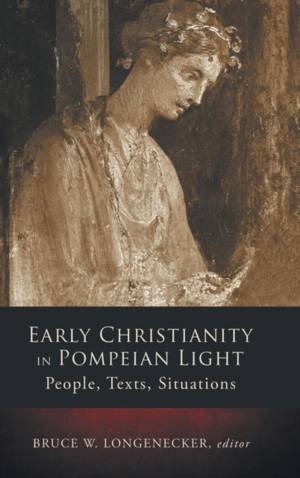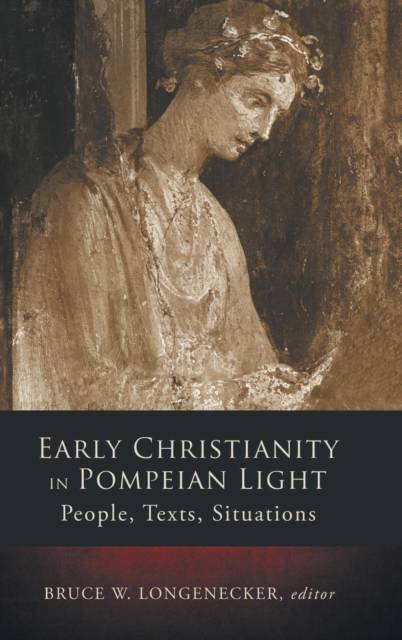
- Retrait gratuit dans votre magasin Club
- 7.000.000 titres dans notre catalogue
- Payer en toute sécurité
- Toujours un magasin près de chez vous
- Retrait gratuit dans votre magasin Club
- 7.000.000 titres dans notre catalogue
- Payer en toute sécurité
- Toujours un magasin près de chez vous
Early Christianity in Pompeian Light
People, Texts, Situations
Bruce W LongeneckerDescription
Scholars of early Christianity are awakening to the potential of Pompeiis treasures for casting light on the settings and situations that were commonplace and conventional for the first urban Christians. The uncovered world of Pompeii, destroyed by the eruption of Mount Vesuvius in 79 C.E., allows us to peer back in time, capturing a heightened sense of what life was like on the ground in the first century the very time when the early Jesus-movement was beginning to find its feet. In light of the Vesuvian material remains, historians are beginning to ask fresh questions of early Christian texts and perceive new contours, nuances, and subtleties within the situations those texts address.
The essays of this book explore different dimensions of Pompeiis potential to refine our lenses for interpreting the texts and situations of early Christianity. The contributors to this book (including Carolyn Osiek, David Balch, Peter Oakes, Bruce Longenecker, and others) demonstrate that it is an exciting time to explore the interface between the Vesuvian contexts and the early Jesus-movement.
Spécifications
Parties prenantes
- Auteur(s) :
- Editeur:
Contenu
- Nombre de pages :
- 272
- Langue:
- Anglais
Caractéristiques
- EAN:
- 9781451490107
- Date de parution :
- 01-11-16
- Format:
- Livre relié
- Format numérique:
- Genaaid
- Dimensions :
- 155 mm x 231 mm
- Poids :
- 498 g







